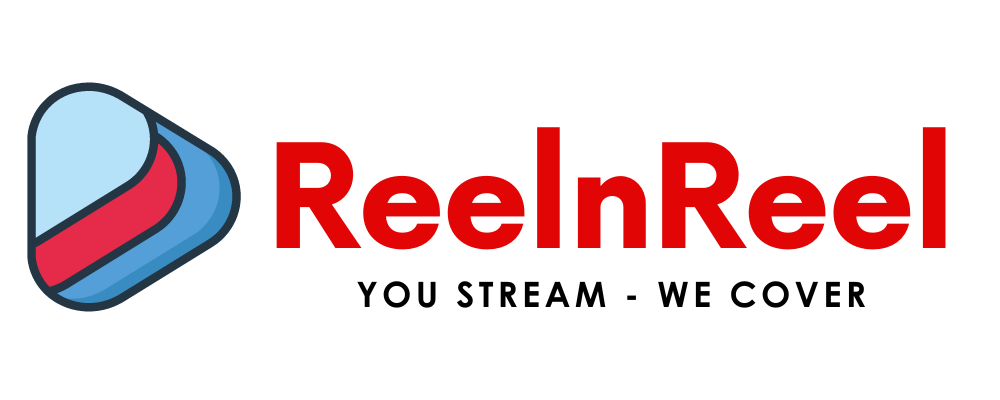Video donation cards are a new type of card introduced by YouTube in 2016. Donation cards enable the raising of money for charities. These are also helpful in engaging members and supporters to help a cause. Google pays the processing fee for credit cards.
Steps to Add a YouTube Donation Card to Videos:
Select Upload a Video from your YouTube account. Click the card icon and then click the ‘Add card’ button. You must select the ‘Donation’ option and click the ‘Create’ button.
In step two, select the 501(c)(3) nonprofit you want to feature in your video. The nonprofit can be where you volunteer, serve as a board member, or are personally involved. Name the donation card. Enter the teaser text. Set the time by sliding the indicator along the timeline. Finally, save the changes. When the video is played, the teaser text will appear for a few seconds at the specified time. YouTubers can choose any US IRS-validated 501(c) (3) public nonprofit organization. According to YouTube, 100% of the donation money is received by them.
Video Donation Cards for Fundraising Benefits
YouTube video donation cards are an essential feature for nonprofits. Here are the benefits of using it.
• Engaging the audience for fundraising.
• Encouraging the other YouTubers to promote the nonprofit by adding donation cards to their videos.
• Engage supporters and others in donating to the nonprofit.
• YouTube donation cards are designed to operate smoothly on mobiles, unlike the other clickable overlays that do not appear on mobile.
• Adding video donation cards to your YouTube videos is a simple process.
• Network for Good sends receipts to donors.
• Google pays the processing fee for the credit cards of those who donate so that the nonprofits will receive a hundred percent of the money donated.
Tips for using video donation cards
• Place the video cards on the right side of the video, ensuring they do not cover the content.
• Choose the most popular videos on your channel and add donation cards.
• The video should be of high quality.
• Ensure that your community knows that you are using video donation cards.
• Direct the people to a reference where they can see how simple it is to add video donation cards to their videos.
• If other members of nonprofits, donors, and others have a strong following on YouTube, request them to add YouTube donation cards to their videos.
• Only people based in the US and UL can add donation cards to their videos.
• People from several countries can donate using the cards.
• The amount raised by a video donation card can be seen in YouTube Analytics or the cards editor.
Using YouTube video donation cards, the goal is to increase donations for the nonprofit. Identify your audience and supporters. Promote the video to them and encourage them to complete the donation form.
YouTube creators can create content that entertains, inspires, and educates their audience. The videos can help nonprofits raise funds. Nonprofits can also request that popular YouTube creators add their nonprofit to the video donation cards. All nonprofits enrolled in the YouTube program have a donation button on their YouTube channel. A video donation card is an additional option for creators to help charities. The donor’s contact information will not be received by either YouTube or the nonprofit.
Measuring Impact: YouTube Analytics Deep Dive
Effectively raising money through YouTube Donation Cards doesn’t stop at adding them to your videos—it’s equally important to track and measure their performance using data-driven insights. YouTube provides robust analytics tools that allow creators and nonprofit partners to understand how donation cards are performing, identify what’s working, and continuously optimize fundraising efforts.
Where to Access Donation Card Analytics
You can access data related to your Donation Cards directly in:
-
YouTube Studio → Analytics → Engagement Tab
-
YouTube Studio → Content → Individual Video Analytics → Cards Report
Look for the “Cards” section under each video’s engagement tab to analyze performance by time stamps, placement, and user interaction.
Key Metrics to Monitor
Understanding these specific metrics will help you evaluate the success of your donation campaign:
1. Card Clicks
-
Measures how many viewers actually clicked on the donation card during video playback.
-
Why it matters: Indicates the initial engagement level and whether your CTA (call-to-action) was compelling enough.
2. Card Impressions
-
Counts how many times the donation card was displayed during video playback.
-
Why it matters: Helps determine visibility—whether the card was placed at the right moment to attract attention.
3. Click-Through Rate (CTR)
-
CTR = (Card Clicks / Card Impressions) × 100
-
Why it matters: Offers a percentage that reflects how effective the donation card was at converting views into clicks.
4. Conversion Rate
-
While YouTube itself doesn’t directly display donation conversions (i.e., who donated), if you’re partnered with YouTube Giving or third-party tools like Google.org-supported nonprofits, you may receive donation data externally.
-
You can approximate conversion rates by correlating clicks to donation confirmation reports or backend data from the charity.
5. Total Funds Raised
-
If you’re using YouTube’s integrated charity tools (e.g., YouTube Giving in supported countries), your dashboard will reflect:
-
Total donation amount
-
Number of contributors
-
Average donation per user
-
-
Why it matters: This is your core success metric and helps benchmark future campaigns.
Tips for Optimizing Placement and Timing Based on Data
1. Use Audience Retention Graphs
-
Navigate to YouTube Studio → Analytics → Audience Retention to identify high-engagement points in your video.
-
Insert donation cards at moments where viewers are most likely to stay and engage—this increases impression-to-click opportunities.
2. Avoid Early Video Placement
-
Viewers are less likely to engage within the first 15–30 seconds of a video.
-
Instead, place donation cards after viewer interest is built, such as during emotional or storytelling moments.
3. Test Placement Intervals
-
Run A/B testing across multiple videos to assess which timestamps generate higher card CTRs (e.g., 30 sec vs. 90 sec vs. end screen).
-
Use heatmaps (if available via tools like TubeBuddy or Vidooly) to refine positioning.
4. Improve CTA Clarity
-
Mention the donation card verbally (“Click the ‘i’ at the top right to support…”) and visually (overlays, arrows).
-
Use emotionally resonant appeals to reinforce urgency or impact.
5. Monitor Card Performance by Video Type
-
Compare donation card performance across different content styles:
-
Vlogs vs. Documentaries
-
Short-form vs. Long-form
-
Tutorials vs. Awareness Campaigns
-
-
Tailor your messaging and placement strategies accordingly.
Conclusion: Turning Views into Impact
YouTube Donation Cards present a powerful and underutilized opportunity for creators and nonprofits alike to convert video engagement into real-world impact. By seamlessly integrating these cards into compelling content, creators can inspire their audiences to support meaningful causes—right from the platform they already trust and enjoy.
From simple setup and zero processing fees (thanks to Google), to mobile optimization and full donation transparency, the donation card system removes traditional barriers to fundraising. More importantly, it empowers anyone—from small creators to established influencers—to drive change.
But success doesn’t stop at placement. As this guide outlined, tracking performance through YouTube Analytics, understanding viewer behavior, and continuously refining your strategy are essential to maximizing contributions. Whether you’re a nonprofit hoping to reach new supporters or a creator committed to a cause, YouTube Donation Cards—backed by smart analytics and strong storytelling—can help you achieve your fundraising goals.
How to Use YouTube Donation Cards to Raise Money for Charities: FAQs
What Are YouTube Donation Cards?
YouTube Donation Cards are interactive elements that creators can add to their videos, allowing viewers to donate directly to eligible nonprofit organizations without leaving YouTube.
Who Can Use YouTube Donation Cards?
Only YouTube creators based in the United States and United Kingdom can add donation cards. However, viewers from several other countries can contribute using the cards.
What Types Of Nonprofits Can Be Added?
Only IRS-validated 501(c)(3) public nonprofit organizations in the U.S. are currently eligible for selection in the donation card feature.
Does YouTube Charge A Processing Fee For Donations?
No. Google pays the credit card processing fee, ensuring that 100% of the donation goes to the nonprofit organization.
Where Do I Find The Option To Add A Donation Card?
Go to YouTube Studio → Content → Select a video → Cards → Add Card → Choose “Donation.”
How Do I Add A Donation Card To A YouTube Video?
Go to a video in YouTube Studio, click on the “Cards” icon, select “Add card,” choose the “Donation” option, select the nonprofit, enter teaser text, set the display time, and save.
Can I Customize The Teaser Text In A Donation Card?
Yes. You can create a custom teaser message that appears on the screen to encourage viewers to donate.
Can Multiple Donation Cards Be Added To A Single Video?
While you can add multiple cards to a video, it’s best to use only one donation card per video to avoid overwhelming viewers.
Can I Add Donation Cards To Live Streams Or Premieres?
Not directly, but you can promote your fundraising campaign using pinned comments, live chat messages, and community tab announcements during streams or premieres.
Can I Track Which Video Brought In The Most Donations?
Yes. You can use YouTube Analytics → Cards report to track performance per video, including click and impression data.
How Do I Access Analytics For Donation Cards?
Go to YouTube Studio → Analytics → Engagement tab or visit the Cards section in each video’s detailed analytics.
What Metrics Are Available For Donation Cards?
Metrics include Card Clicks, Card Impressions, Click-Through Rate (CTR), Estimated Conversion Rate (via third-party tools), and Total Funds Raised (if using YouTube Giving).
What Is A Good CTR (Click-Through Rate) For Donation Cards?
While CTR varies by niche, a CTR above 2% is considered good for donation cards. Test placement and messaging to improve it.
Can I Track Actual Donations Made Through The Cards?
YouTube doesn’t directly show donor info, but third-party charity partners or the YouTube Giving dashboard (if enabled) may provide donation summaries.
How Can I Improve The Performance Of Donation Cards?
Use audience retention graphs to place cards at peak engagement points, include verbal and visual CTAs, and test different placement intervals like 30 sec or 90 sec.
Should I Add Donation Cards To All My Videos?
Focus on adding them to high-performing and emotionally engaging videos. Quality and relevance are more important than quantity.
How Can I Promote A Video With A Donation Card?
Share it on social platforms, add it to your YouTube channel homepage, use community posts, stories, and collaborations, and encourage other creators to share or embed the video.
Can Nonprofits Ask Influencers To Add Donation Cards For Them?
Yes. Nonprofits can partner with YouTube creators who can add donation cards to their content and help raise funds.
Will I Or The Nonprofit Receive The Donor’s Contact Info?
No. YouTube does not share donor information with creators or nonprofits for privacy reasons.
What Should I Do If My Donation Card Isn’t Showing Up?
Ensure you’re located in an eligible country (US/UK), the nonprofit is validated, and that the video is eligible (not private or restricted). Try placing the card at a later timestamp and double-check settings.





